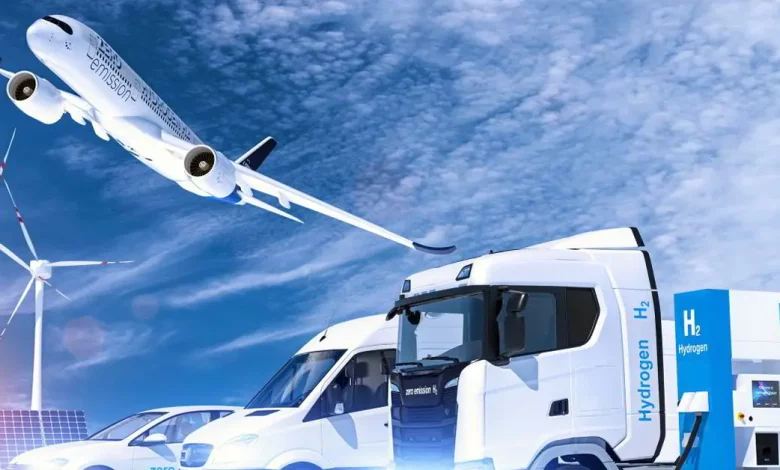Daily Current Affairs for UPSC
Use of Green Hydrogen in the Transport Sector
Syllabus- Environment [GS Paper-3]

Context- The Ministry of New & Renewable Energy (MNRE) has recently issued guidelines for the implementation of the Scheme for Pilot Projects for use of Green Hydrogen in the Transport Sector.
About
- Under the National Green Hydrogen Mission, the MNRE will implement pilot initiatives for replacing fossil fuels in the delivery region with Green Hydrogen and its derivatives.
- The Scheme will be implemented with a complete budgetary outlay of Rs. 496 Crores till the economic 12 months 2025-26.
Scheme Guidelines for Pilot Project
- The scheme will help improve the use of Green Hydrogen as a fuel in Buses, Trucks and four-wheelers, based totally on gasoline cellular/internal combustion engine-based propulsion generation.
- The different thrust region for the scheme is to aid development of infrastructure inclusive of hydrogen refueling stations.
- The scheme can even be sought to aid every other progressive use of hydrogen for reducing carbon emissions within the delivery sector, consisting of mixing of methanol/ethanol, primarily based on green hydrogen and different artificial fuels derived from green hydrogen in vehicle fuels.
What is Green Hydrogen?
- Green Hydrogen: The hydrogen produced through electrolysis, the splitting of water into hydrogen and oxygen with electricity generated from renewable electricity sources which include solar or wind, is called Green hydrogen.
- MNRE defines Green Hydrogen as having a nicely-to-gate emission (i.E., together with water treatment, electrolysis, gasoline purification, drying and compression of hydrogen) of not more than 2 kg CO2 equal / kg H2.
- Green hydrogen currently accounts for less than 1% of world hydrogen production because of it being high-cost to produce.
National Green Hydrogen Mission
- The challenge was launched in 2023 with an outlay of Rs. 19,744 crores.
- It aims to make India a Global Hub for production, utilization and export of Green Hydrogen and its derivatives.
- The Ministry of New and Renewable Energy (MNRE) may be responsible for typical coordination and implementation of the Mission.
- Under the Strategic Interventions for Green Hydrogen Transition Programme (SIGHT), two wonderful economic incentive mechanisms – focused on home production of electrolysers and manufacturing of Green Hydrogen – may be provided under the Mission.
- The Mission will bring about the subsequent probable outcomes by 2030;
- Development of green hydrogen manufacturing ability of at the least 5 MMT (Million Metric Tonne) in step with annum with an associated renewable power capacity addition of about 125 GW within the country
- Over Rs. 8 lakh crore in total investments
- Cumulative discount in fossil gasoline imports over Rs. 1 lakh crore
- Abatement of nearly 50 MMT of annual greenhouse fuel emissions
Challenges
- Risks related to the transportation: Hydrogen in gaseous shape is extraordinarily inflammable and hard to move, thereby making protection a primary concern.
- Higher Cost: Green hydrogen manufacturing is currently extra high cost than traditional methods, ordinarily due to the high price of renewable energy resources and electrolysis generation.
- Lack of gasoline station infrastructure: India will need to compete with around 500 operational hydrogen stations internationally nowadays that are frequently in Europe, followed by Japan and South Korea.
Way Ahead
- Green hydrogen, produced through an easy manner, is rightly visible because it is the maximum reliable source of energy of the future.
- For India to comprehend its aims, it needs to strengthen its small production and allied corporations infrastructure along with large industries.
- Increasing renewable strength use throughout all monetary spheres is important to India’s Energy Transition.
- Green Hydrogen is taken into consideration a promising alternative for permitting this transition that can be applied for long-duration storage of renewable power, alternative of fossil fuels in enterprise, smooth transportation, and potentially also for decentralized strength generation, aviation, and marine transport
Source: News on AIR





.png)



